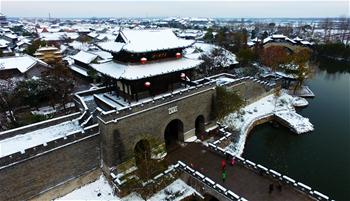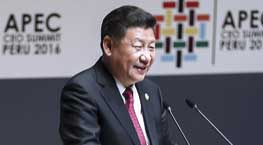BEIJING, Nov. 23 (BEIJING) -- A key price index on Wednesday showed China's coal price drop continued due to effective government measures to ease a shortage, which also mitigated worries about supply-side reform.
The Bohai-Rim Steam-Coal Price Index (BSPI), a gauge of coal prices in northern China's major ports, fell 0.5 percent from a week ago to 601 yuan (87.22 U.S. dollars) per tonne, according to Qinhuangdao Ocean Shipping Coal Trading Market Co. Ltd.
It was the third straight week of price declines since the National Development and Reform Commission (NDRC) moved in to replenish coal supply as prices rose.
By Nov. 2, the BSPI had risen for a straight 18th week, up 63.6 percent from the start of the year. Buoyed by the price hikes, 19 listed coal companies posted profit increases in the third quarter of the year, in sharp contrast with 2015, when only three miners reported profits.
However, the surging prices made downstream thermal power plants and steel mills suffer, and, more importantly, threatened the coal sector's ongoing cuts to excessive capacity. The cuts are considered an indispensable link in the country's economic restructuring.
Analysts believe the bloated sector needs further downsizing in the long run, despite the current shortage caused by rising demand for winter heating and closure of under-performing mines.
The country's top economic planner convened eight meetings in the past two months to address the issue, rolling out an array of measures, such as pushing for medium and long-term supply contracts between coal producers and buyers, and relaxing the limit on production days for efficient mines.
China is the world's largest consumer of coal. But the industry has for years been plagued by overcapacity. Addressing the issue has become top priority on the government's agenda.
During the first ten months of the year, China's coal output fell 10.7 percent year on year to 2.74 billion tonnes. By the end of September, over 80 percent of the 250 million tonnes of capacity up for cuts this year had already been eliminated.
The NDRC pledged the move to increase supply will not weaken capacity-cutting efforts. "The government's resolution (on excess capacity cuts) is unwavering," NDRC deputy secretary general Xu Kunlin has said.
China eliminated 560 million tonnes of ineffective coal capacity in the past five years and plans to cut another half billion tonnes in the next few years.










